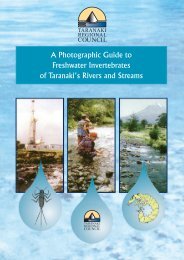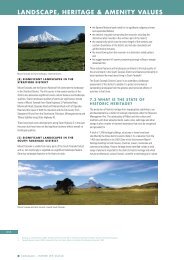Yellow Bristle Grass - The Ute Guide
Yellow Bristle Grass - The Ute Guide
Yellow Bristle Grass - The Ute Guide
- TAGS
- yellow
- bristle
- grass
- guide
- trc.govt.nz
Create successful ePaper yourself
Turn your PDF publications into a flip-book with our unique Google optimized e-Paper software.
Biology<br />
<strong>Yellow</strong> <strong>Bristle</strong> <strong>Grass</strong> <strong>Ute</strong> <strong>Guide</strong><br />
As a summer growing annual, yellow bristle grass reproduces only by seed. Seeds<br />
are dispersed by water, soil movement, animals, and as contaminants of crop<br />
seed and hay. <strong>The</strong> barbed seeds are often carried in fur, feathers, or clothing.<br />
Seeds are hard-coated and most fl oat on water. Seed production and germination<br />
requirements are variable, depending on several factors, including environmental<br />
conditions. Optimal temperatures for germination are typically between 20 and<br />
35°C. Germination typically starts in mid October and peaks in mid November.<br />
Early seed heads appear in mid to late December but mostly in January and<br />
February. Mature plants and empty seed heads will persist until the fi rst frost.<br />
<strong>Yellow</strong> bristle grass seeds are usually dormant at maturity and require about 2–4<br />
months of after-ripening before they can germinate. Most seeds survive only a few<br />
years under fi eld conditions, although some deeply buried seed may survive for up<br />
to 10 years or more. Seedlings can emerge from soil depths of up to 10 cm, but<br />
optimal germination is at 1–2 cm depth. Counts have shown seed numbers up to<br />
20,000/m 2 but typically 5–10,000/m 2 under light infestations.<br />
6














